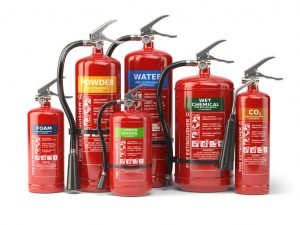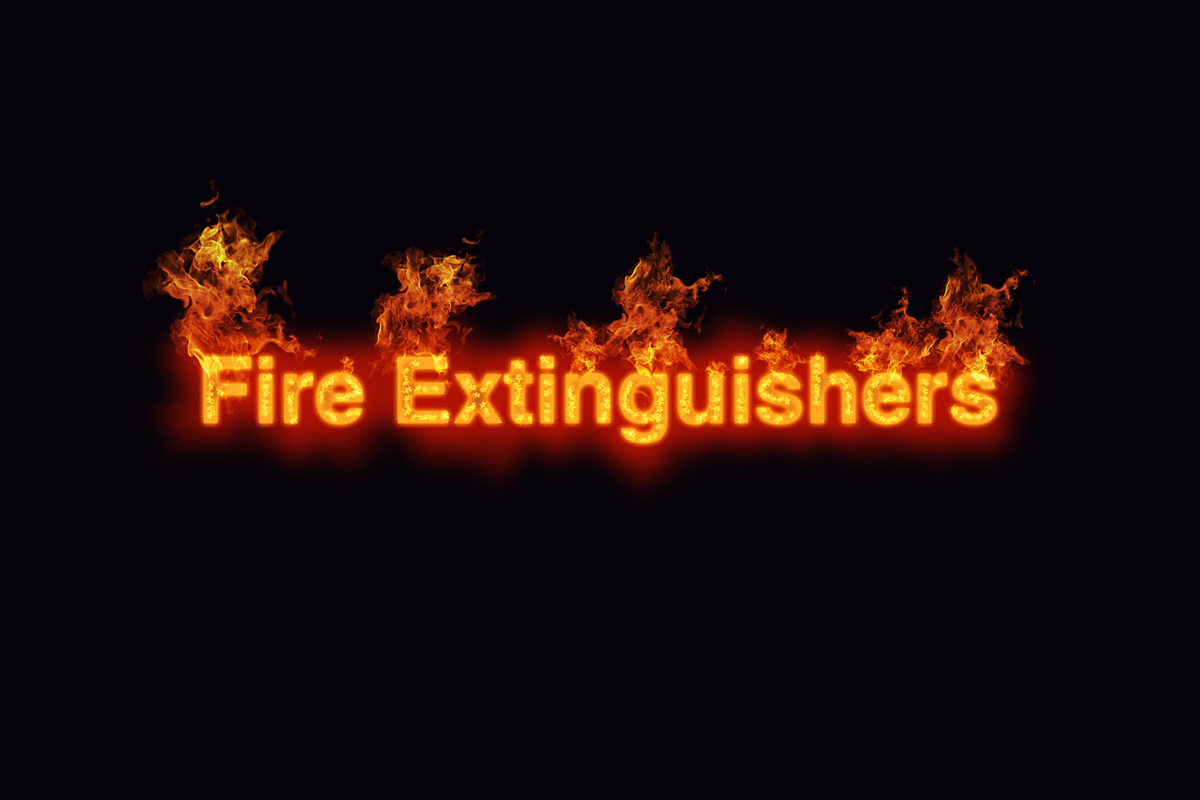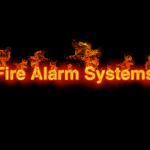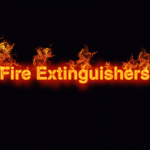Fire is the oxidation of elements in the exothermic chemical combustion, releasing light, heat and other reaction products depending on the components involved.
Different fires require different fire extinguishers, as will be discussed below.
By understanding the various types of fires, you will know which fire extinguisher to choose.
Contents
The PASS System for Using Fire Extinguishers
 After identifying the cause of the fire and deciding on the type of fire extinguisher to use, the following simple guides will help you use your extinguisher safely and prevent the fire from causing more havoc.
After identifying the cause of the fire and deciding on the type of fire extinguisher to use, the following simple guides will help you use your extinguisher safely and prevent the fire from causing more havoc.
The acronym PASS is used as it can easily be recited and recalled in the case of a fire.
P – Pull the pin – After choosing a suitable fire extinguisher, pull the pin to unlock the fire extinguisher, which activates it for use.
A – Aim at the fire – Try and aim at the bottom-most part of the fire. The fuel source is usually at the bottom, and by directly aiming at it, you will be applying the extinguishing component at the source of the fire hence putting it out.
S – Squeeze the handle – After unlocking and aiming correctly, the next step is to carefully squeeze the handle for the extinguishing component to be released. Try and exercise caution as the extinguishing agent is limited.
S – Sweep – When using a fire extinguisher, try as much as possible to maintain a safe distance. To ensure you cover as much area of the base as possible, keep swinging the nozzle until the fire is completely put out.
Fires tend to reignite and for this reason, monitor the area for some time to ensure it doesn’t reignite. If it reignites, repeat the PASS system.
If the fire comes back aggressively, you should leave immediately and let fire and rescue services tackle it.
PASS System for Extinguishing Fires Infographic
Types of Fires
There are several types of fires, depending on the components involved:
- Class A: Generally includes combustible materials like paper, wood, fabric, coal, etc. They are fires caused by flammable solids.
- Class B: These are fires that are caused by Flammable liquids like alcohol, paint, petrol, etc
- Class C: These are fires caused by farmable gases like methane, hydrogen, etc
- Class D: These are fires caused by combustible metals and chemicals like potassium, magnesium, and others
- Electrical fire: These are fires caused by electrical equipment like heaters, batteries, etc. Once the electrical aspect is eliminated, a person can use any other fire extinguisher based on the fuel for the fire
- Class F: These are fires related to oil like cooking oils
How to Choose the Correct Fire Extinguisher
The labels and colours found on fire extinguishers help users determine which type of fire extinguisher to use in the occurrence of a fire.
The five fire extinguisher colours are:
- Blue – Dry Powder
- Black – Carbon Dioxide (CO2)
- Cream – Foam
- Red – Water (Spray and Mist)
- Yellow – Wet Chemical
1. Blue (Dry Powder Extinguishers)
 Blue label fire extinguishers are sometimes known as ‘ABC’ extinguishers because they can be used on Class A, B, and C fire types. However, this fire extinguisher must not be used in enclosed spaces because it is very easy to inhale the powder, and cleaning is not easy.
Blue label fire extinguishers are sometimes known as ‘ABC’ extinguishers because they can be used on Class A, B, and C fire types. However, this fire extinguisher must not be used in enclosed spaces because it is very easy to inhale the powder, and cleaning is not easy.
2. Black (Carbon Dioxide (CO2) Extinguishers)
Black labelled fire extinguishers are CO2 fire suppressers, and they are primarily used for electrical fires. They are also used in computer server rooms. They can also be used in Class B fire types.
3. Cream (Foam Extinguishers)
This is another common extinguisher and designed for Class B type of fire. It also works best for Class A type of fires. Nevertheless, a foam fire extinguisher is recommended for fires related to flammable liquids such as diesel, petrol, alcohol, oils, etc. the foam produced by the extinguisher is non-toxic.
4. Red (Water Extinguishers)
Water-based extinguishers are the most common type of extinguisher found in many businesses and public buildings and the cheapest option.
They are commonly recommended for hotels, residential areas, and public places. These are designed for Class A type of fires and carry the original ‘Signal Red’ colour label. For this reason, a water-based fire extinguisher must not be used on electrical fire under any circumstance. That is because water is conductive and may cause further safety issues.
5. Yellow (Wet Chemical Extinguishers)
Yellow labelled fire extinguishers are wet chemical-based extinguishers and designed for Class F types of fires. It is important to note that Class F fires generally occur in professional kitchens and other spaces where oil is being heated to high temperatures. Although this type of fire extinguisher can be used for Class A type of fire, many businesses will mainly prefer water or foam extinguishers for this purpose.
Our Services
If you are in need of a fire extinguisher inspection and service, our accredited consultants will attend your sites at a time convenient to you. Contact us today to arrange a visit and decide on the future course of action.





